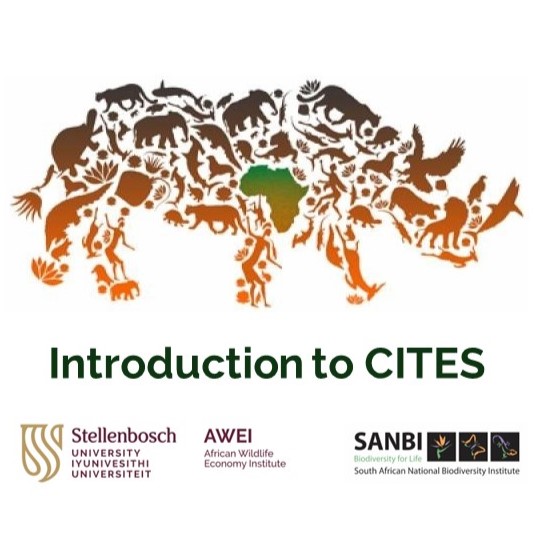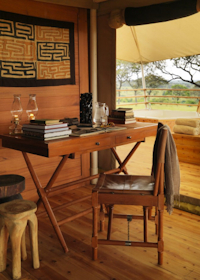CITES Module 2
 2 International trade-related agreements
2 International trade-related agreements
In this module you will learn about some of the key international trade agreements and strategies relevant to the trade in wild species.
Lecture
- Click on the image below to stream the lecture on OneDrive (10 min)
- You can also download the lecture for listening offline
- Take notes while listening
 A selection of key trade agreements
A selection of key trade agreements
There are many international trade agreements that are pertinent to relevant to the trade in wild species. Though the lecture highlighted the four in bold below, you should also familiarise yourself with the others in this list.
1910 - Southern African Customs Union (SACU)
1992 - Southern African Development Community (SADC)
1994 - Common Market for Eastern and Southern Africa (COMESA)
1995 - World Trade Organisation (WTO)
2000 - African Growth and Opportunity Act (AGOA) …with the USA
2008 – SACU Free Trade Agreement with the European Free Trade Association
2024 - Trade, Development and Cooperation Agreement with South Africa … with the EU
2019 - African Continental Free Trade Area (AfCFTA)
Learning resources - videos
- While watching these videos, reflect on the learning questions provided
- Take notes while watching
Let's Talk WTO
- The World Trade Organization (WTO) is the only global international organization dealing with the rules of trade between nations. At its heart are the WTO agreements, negotiated and signed by the bulk of the world’s trading nations and ratified by their parliaments. These rules provide a predictable and transparent framework which makes it easier for producers of goods and services to trade across borders.
- Q: As an internationally agreed framework, how might the WTO relate to intra African trade?
What is AfCFTA?
- The African Continental Free Trade Area (AfCFTA) is a landmark trade agreement initiated by the African Union (AU). It encompasses most of Africa and aims to foster economic integration and growth across the continent.
- Q: Can you think of examples of intra African trade in wildlife products?
 Learning resources - readings
Learning resources - readings
- While skimming through these documents, reflect on the learning questions provided
- Also, download documents for future reference
- In brief, the World Trade Organization (WTO) is the only international organization dealing with the global rules of trade. Its main function is to ensure that trade flows as smoothly, predictably and freely as possible.
- Q: Why does the WTO aim to lower trade barriers?
Making trade work for the environment, prosperity, and resilience
- Trade can help green business expand and flourish. It can promote environmental conservation and economic efficiency, and improve access to clean technologies at a lower cost.
- Q: Do trade barriers work in favour or against sustainable development?
The African Continental Free Trade Area: A tralac guide (10th edition)
- The AfCFTA Agreement is a comprehensive legal compact which includes the Agreement establishing the AfCFTA, Protocols on Trade in Goods, Trade in Services, Dispute Settlement, Investment, Intellectual Property Rights and Competition Policy. Recently, Digital Trade and Women and Youth have been added to the negotiating agenda.
- Q: Could AfCFTA facilicate continental value chains for wildlife products?
- AGOA - the acronym for ‘African Growth and Opportunity Act’ - is the name of US legislation known formally as the ‘Trade and Development Act of 2000’ which - on a unilateral basis - provides highly preferential access to the US market for thousands of products produced in, and exported by, qualifying countries in Sub-Saharan Africa (SSA).
- Q: Do wildlife products from Africa quality for AGOA Preference?
 Learning resources - websites
Learning resources - websites
- While browsing these websites, reflect on the learning questions provided
- Also, bookmark websites for future reference
- The World Trade Organization (WTO) is the only global international organization dealing with the rules of trade between nations. At its heart are the WTO agreements, negotiated and signed by the bulk of the world’s trading nations and ratified in their parliaments.
- Q: Are there any countries in Africa which are not a Party to the WTO?
- Our work covers everything from growing and marketing coffee and pineapples to supporting tech start-ups and working in ethical fashion and the textile industry, all of which you can explore in detail in our projects and topics pages.
- Q: Does the ITC provide any guidance wildlife trade?
- Biodiversity is the natural capital base for a sustainable economy. To capture this opportunity, in 1996 UNCTAD launched the BioTrade Initiative to support the objectives of the CBD.
- Q: Is biotrade another way of saying wildlife trade or is it a different concept?
- The AfCFTA is the world’s largest free trade area bringing together the 55 countries of the African Union (AU) and eight (8) Regional Economic Communities (RECs). The overall mandate of the AfCFTA is to create a single continental market with a population of about 1.3 billion people.
- Q: Will the growth of trade within Africa facilitate legal trade of wildlife products?
Non-Tariff Barriers: Trade barriers in Africa
- Through the NTB Mechanism, you can report any obstacle encountered when trading goods across intra-African borders, for example excessive delays, ad hoc fees at the border, cumbersome document requirements, restrictive product standards and regulations etc.
- Q: Could this NTB Mechanism be used to reduce barriers to intra African trade in wildlife products?
Let's continueGo to Module 3 Biodiversity and trade policies in South AfricaGo back to Module 1Go back to the introduction |
Get updates by email
Through impactful research, stakeholder engagement, and professional development, AWEI is supporting the wildlife economy across Africa. Please subscribe for occasional updates on our work and forthcoming events.
Sign up for a quarterly dose of AWEI insights
In a complex and changing world, AWEI generates strategic ideas, conducts independent analysis on wildlife economies, and collaborates with global scholar-practitioners to provide training and expertise for biodiversity conservation, climate resilience, and inclusive economic opportunities in Africa.
